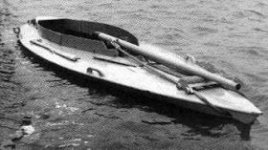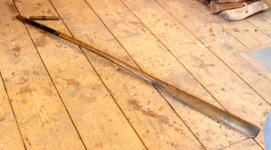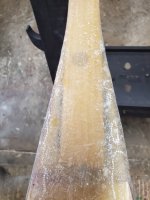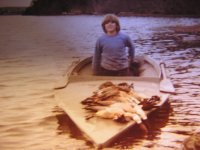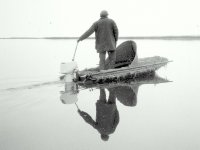I have never brought to mind that a Sneak Boat was a Scull Boat?
I have been reading these sites and came across many times about Sneak Boats and, as one indicated that they were made and originated in the Barnegat Bay for sneaking up on birds and killing the birds you're sneaking on.
Not only the Barnegat Bay Boats but many with the same design features with a few detail changes somewhat like the west coast original Scull Boats.
On the east Coast I believe much like the west Coast these boats were used in the Market days.
The west coast sculls were downsized a great deal as time moved through the century. Today these scull boats are very low profile and very deadly on Duck s and Geese.
Then I come to the East Coast Sneak Boats which are much larger in styles. These sneak Boats have motors where our Scull boats are used in the rear of the Boats for forward propelling the boat forward as you lay down and Scull into the Birds.
These Sneak boats with the size which I brought up in post I thought were used for running to a spot setting out decoys then pulling your sneak boat in and covering with Grasses/Tules from terrain.
I had no idea these boats were sculled into Ducks as we do Sculling. I need a simple explanation on how these boats are actually used the sneak boats.
They are very much unlike the Scull boats not only in size but the use in which they perform.
Scull boats are primarily used for sculling on the ducks you wish to shoot. IC the Barnegat sneak boats used for setting decoys to be very proficient for which they are used shooting over decoys. But sculling on Birds being a different ordeal on the way the two boats are used.
We on the west coast call a sneak boat as a scull boat and used specifically for sculling on your birds.
There is a great deal of difference between the two boats. One used with an oar the other used with a motor. A motor can be used to take you where you'd like then must be shut off for hunting.
I have mentioned the size of the sneak boats of the east coast and when brought to my attention some were used to scull into birds, but I thought simply because of the size of the east coast sneak boats was because the open water they use them in is a huge body of water and boats were large for safety reasons.
As large as they are they would be difficult to sneak on birds on the west coast. With all the conditions being perfect it would be difficult to scull on ducks in my opinion only. I hope to hear more on how they are used and why are they built so large.
I always thought for packing decoys and used as a lay down Blind sort of speak. True or False.
I have been reading these sites and came across many times about Sneak Boats and, as one indicated that they were made and originated in the Barnegat Bay for sneaking up on birds and killing the birds you're sneaking on.
Not only the Barnegat Bay Boats but many with the same design features with a few detail changes somewhat like the west coast original Scull Boats.
On the east Coast I believe much like the west Coast these boats were used in the Market days.
The west coast sculls were downsized a great deal as time moved through the century. Today these scull boats are very low profile and very deadly on Duck s and Geese.
Then I come to the East Coast Sneak Boats which are much larger in styles. These sneak Boats have motors where our Scull boats are used in the rear of the Boats for forward propelling the boat forward as you lay down and Scull into the Birds.
These Sneak boats with the size which I brought up in post I thought were used for running to a spot setting out decoys then pulling your sneak boat in and covering with Grasses/Tules from terrain.
I had no idea these boats were sculled into Ducks as we do Sculling. I need a simple explanation on how these boats are actually used the sneak boats.
They are very much unlike the Scull boats not only in size but the use in which they perform.
Scull boats are primarily used for sculling on the ducks you wish to shoot. IC the Barnegat sneak boats used for setting decoys to be very proficient for which they are used shooting over decoys. But sculling on Birds being a different ordeal on the way the two boats are used.
We on the west coast call a sneak boat as a scull boat and used specifically for sculling on your birds.
There is a great deal of difference between the two boats. One used with an oar the other used with a motor. A motor can be used to take you where you'd like then must be shut off for hunting.
I have mentioned the size of the sneak boats of the east coast and when brought to my attention some were used to scull into birds, but I thought simply because of the size of the east coast sneak boats was because the open water they use them in is a huge body of water and boats were large for safety reasons.
As large as they are they would be difficult to sneak on birds on the west coast. With all the conditions being perfect it would be difficult to scull on ducks in my opinion only. I hope to hear more on how they are used and why are they built so large.
I always thought for packing decoys and used as a lay down Blind sort of speak. True or False.


